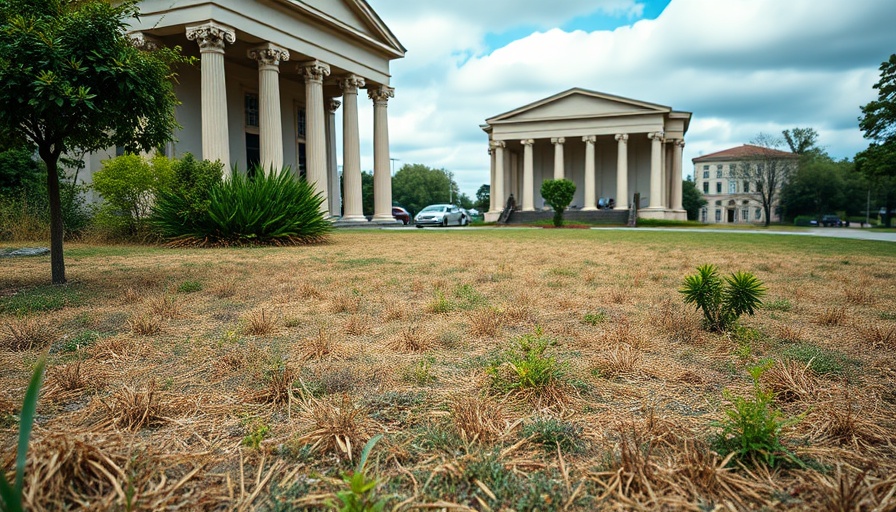
Revitalizing Your Lawn: A Step Towards Sustainable Living
Having a well-maintained lawn is more than just about aesthetics; it symbolizes care for our environment and contributes to sustainable urban living. If your lawn is looking neglected, with yellow patches and overgrown weeds, don't fret! Restoring it can be a fulfilling project that not only beautifies your home but also fosters a deeper connection with nature.
Understand the Roots of Neglect
Before jumping into restoration, it's important to understand why lawns tend to get neglected. Common causes include unbalanced fertilization, lack of regular maintenance, and even climate conditions. However, the commitment to rectify these issues is what's crucial. Acknowledging these challenges allows homeowners to take informed steps towards rejuvenating their lawns.
Removing Weeds and Thatch: The First Step Forward
One of the first tasks should be removing weeds and dethatching your lawn. Weeds compete with your grass for nutrients, so they need to go! The best time to tackle this is in spring or fall, allowing for the freshest growth to emerge. Dethatching not only removes dead grass but also paves the way for healthier soil. Remember to dig up roots and stems, as these can hinder new growth.
Transportation of Nutrients: Aeration and Soil Health
Aerating your lawn is another essential step to promote healthy growth. This involves puncturing the soil to allow air, water, and nutrients to penetrate deeper into the roots. Many homeowners choose to rent aeration equipment or hire a lawn care professional for this task. After aeration, mix some fine sifted soil and sand into the grass which helps condition the soil.
Soil Testing: A Smart Approach to Lawn Care
Next, it’s imperative to test your soil’s pH level. Misbalanced pH levels can insinuate why grass growth isn’t thriving. A straightforward soil test can reveal if your lawn needs products to amend the levels before fertilizing. Healthy soil will lead to a lusher, greener lawn.
Fertilizing: The Green Light for Growth
Once your soil is prepared, it’s time to fertilize. Choosing the right fertilizer depends on your soil test results and your grass type. A well-fertilized lawn can rejuvenate neglected patches and ensure even growth across your space. Opt for slow-release organic fertilizers whenever possible, supporting sustainable practices within your gardening efforts.
Year-Round Commitment: Consistent Care is Key
Don’t let the colder months pass by without maintaining your lawn. Mowing responsibly and keeping grass at the right height is fundamental. Adopting a rotary mower during the fall helps collect leaves and ensures the grass remains tidy. Remember, a little care consistently can lead to beautiful long-term results.
Pruning Trees and Shrubs: A Beautifying Touch
Lastly, consider the health of your trees and shrubs. Pruning them encourages healthy growth and can enhance your lawn’s overall appearance. While some may find removing trees or shrubs challenging, focusing on care and aesthetic pruning can rejuvenate the entire landscape.
Creating Space for Community Connection
Restoring a neglected lawn isn’t just about personal satisfaction; it can inspire community gardening initiatives too! As you revive your space, consider how sharing your journey can encourage neighbors to join in the fun of gardening. Perhaps initiate a community garden project, emphasizing urban farming or vertical gardening, which can enhance your neighborhood’s green connection.
Final Thoughts: Your Lawn, Your Legacy
In conclusion, restoring a neglected lawn is a step towards more sustainable living. Every action you take contributes not just to your immediate environment but can inspire others to cultivate their green spaces. So, roll up your sleeves, refill your watering can, and let’s transform those patches of despair into vibrant carpets of life.
Join the movement towards sustainable agriculture. Start your restoration project today and be part of a greener community!
 Add Row
Add Row  Add
Add 




 Add Row
Add Row  Add
Add 

Write A Comment